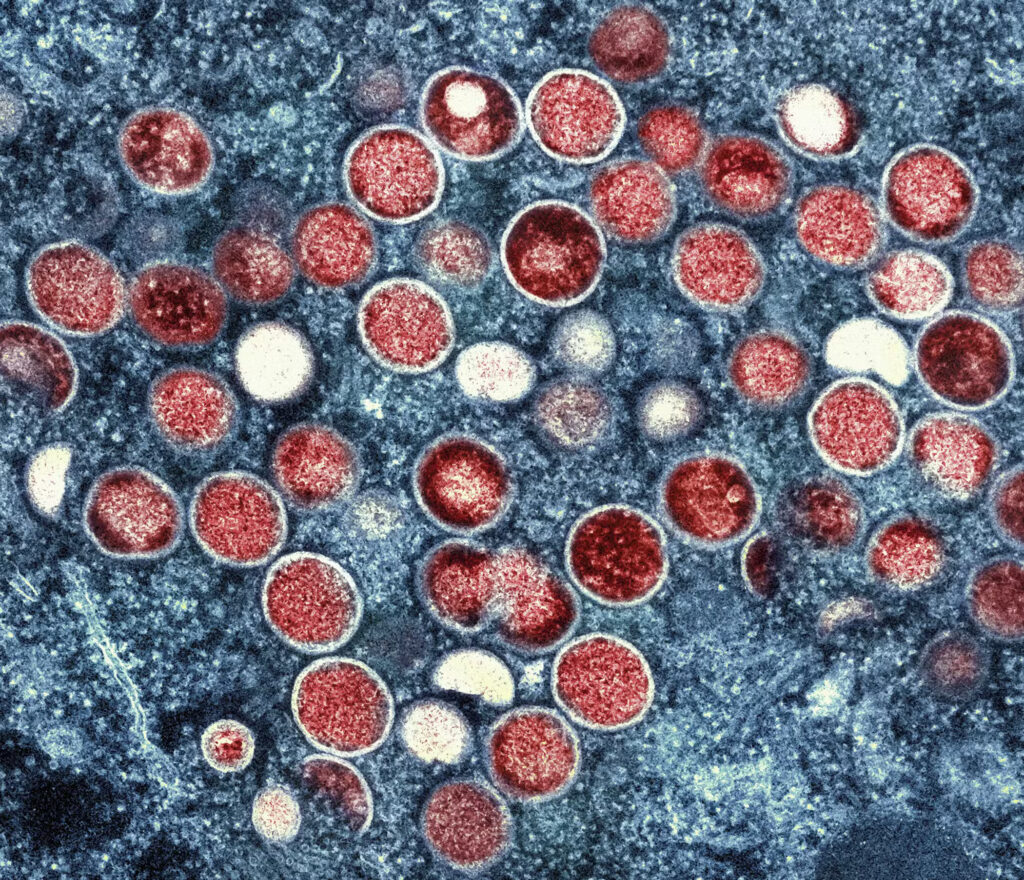As the World Health Organization (WHO) declared that mpox is a global health emergency, it is just fitting to be informed about the symptoms of this virus.
Mpox, also known as monkeypox, was first identified by scientists in 1958 when there were outbreaks of a “pox-like” disease in monkeys.
Until recently, most human cases were seen in people in central and West Africa, who had close contact with infected animals.
READ MORE:
Mpox in the Philippines: First case for 2024 detected, says DOH
Mpox: A new global health emergency
Mpox: Will it trigger another pandemic?
In 2022, the virus was confirmed to spread via sex for the first time and triggered outbreaks in more than 70 countries across the world that had not previously reported mpox.
Mpox belongs to the same family of viruses as smallpox but causes milder symptoms like fever, chills and body aches. People with more serious cases can develop lesions on the face, hands, chest and genitals.
Mpox symptoms
According to the US Centers for Disease Control and Prevention (CDC), people with mpox often get a rash that may be located on hands, feet, chest, face, or mouth or near the genitals, including penis, testicles, labia, and vagina, and anus.
The CDC also said incubation period is 3–17 days. During this time, a person does not have symptoms and may feel fine.
The rash will go through several stages, including scabs, before healing. The rash can initially look like pimples or blisters and may be painful or itchy.
Other symptoms of mpox can include fever, chills, swollen lymph nodes, exhaustion, muscle aches and backache, headache, and respiratory symptoms such as sore throat, nasal congestion, or cough.
You may experience all or only a few symptoms, says the CDC in its website.
Typically, mpox symptoms start within 21 days of exposure to the virus, the CDC said that if you have flu-like symptoms, you will likely develop a rash 1 to 4 days later. If you have symptoms, such as a rash, visit a healthcare provider.
How does virus spread?
A person with mpox can spread it to others from the time symptoms start until the rash has fully healed and a fresh layer of skin has formed.
New data show that some people can spread mpox to others from one to four days before their symptoms appear.
There are two types of mpox: clade I and clade II.
Both clades can spread through direct contact with infected wild animals, through close contact, including intimate or sexual contact, with a person with mpox, and through contact with contaminated materials.
Regardless of type, the mpox virus can spread to anyone through close, personal contact. This includes direct skin-to-skin contact with mpox rash or scabs from a person with mpox, contact with saliva, upper respiratory secretions (snot, mucus), and bodily fluids or lesions around the anus, rectum, or vagina from a person with mpox.
